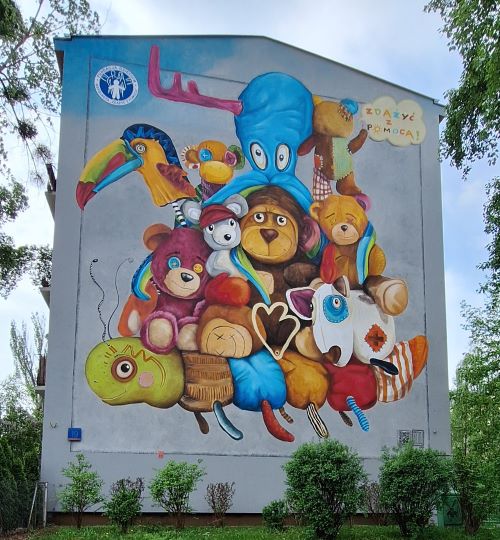20 kwiecień 2008
I know eurocrats
I have seen a map featuring the growth pattern foreseen for all of Central Europe. The borders of rapid growth have a crescent shape: in the east they go as far as Gdańsk; later they turn towards the west and Poznań and on to Wrocław, Cracow, Budapest, Vienna and Zagrzeb. They avoid central Poland completely. Only Warsaw has a chance of joining this “growth belt” although it is located in the very disadvantaged area of impoverished Mazovia. I believe myself to be a good lobbyist. I know that an important part of a europarlamentarian`s job is lobbying, making contacts and being able to present your arguments informally. I can do that.


Wisła Surażska
DR. WISŁA SURAŻSKA
President of the Regional Research Center,
candidate for the European Parliament
Damian A. Zaczek:
Polish provinces have different borders than regions. How does the national province division look?
WISŁA SURAŻSKA: First off I would like to make it clear that Polish territorial divisions mirror social divisions. They overlap with cultural divisions that were shaped in the Prussian, Austrian and Russian partitions. Please remember that at the turn of the 19th and 20th century, rapid growth of political and citizen society as well as an expansion of voting rights took place. Poland at that time didn’t exist as a state and therefore it adopted the political and economic cultures of the partitioning powers – each zone from a different empire. Here I should mention that the Austrian and Prussian areas of Poland, the west and south, are more similar than the central-eastern territory annexed by Russia. Variations in the growth of these regions are significant – to the disadvantage of those areas under Russian control. At the turn of the 19
th and 20
th century, distinct political deviations were shaped in Poland. Prussian and Austrian authorities introduced local elections to the Galician parliament and Kingdom of Pozn
ań. Of course voting right weren’t universal but it was enough that a large segment of the population learned to vote and choose its representatives. These local parliaments decided about many issues concerning the given region. In this way regional societies with specific traits, aspirations and preferences were created.
In the Congress Kingdom of Poland, within the Russian partition, there was no such local governance, traditions such as these didn’t develop and neither did joint responsibility for management of the region. Until today the growth of a self-governing society is slower than in other regions of Poland. For example, Andrzej Lepper is supported primarily by voters from central Poland, the territories of the former Congress Kingdom.
Not from the poorer eastern areas of Poland?
The eastern regions have a somewhat different character. The so-called eastern wall is economically weak but socially vital. Family and religious traditions are still very strong. In central Poland the secularization of the countryside took place and no new values were assimilated. This is what we would call peasant nihilism.
Let’s return to the most developed Polish region – Wielkopolska. As a matter of fact, in that sense no other region can compare with it although the Tricity area is developing rapidly. Now that we are in the EU, Wielkopolska will begin to grow even more dynamically. I think it will be another Catalonia.
Do European regions coincide with Polish regions?
I have seen a map featuring the growth pattern foreseen for all of Central Europe. The borders of rapid growth have a crescent shape: in the east they go as far as Gdańsk; later they turn towards the west and Poznań and on to Wrocław, Cracow, Budapest, Vienna and Zagrzeb. They avoid central Poland completely. Only Warsaw has a chance of joining this “growth belt” although it is located in the very disadvantaged area of impoverished Mazovia.
What will happen with smaller sub-regions?
I have drawn a map of the potential for subregional development. In eastern Poland, historically urbanization was never completely carried out. As a result of WWII eastern cities such as Brześć Litewski and Lviv were isolated from their provinces, or the land surrounding them. In the vicinity of large cities smaller cities and villages have developed for centuries. After the war, cities such as Białystok and Biała Podlaska assumed the role of previously large centers but they are still too weak. The main problem of our “eastern wall” is the weak growth of its cities.
Since everyone is looking to the West no one will be interested in the growth of the “eastern wall?”
Larger, more wealthy cities have a greater chance for growth. These variations or disproportions are certainly cause for concern. It is tempting for administrations to limit the rapid growth of their “good” regions and earmark more funds to the poorer ones. This is a dangerous way of thinking. In terms of a general analysis it turns out that it is better to give the richest another chance since it is they who will pull at the weaker regions at a later date.
Is there a chance for the establishment of regions out of Lviv or Brześć?
Attempts were made many years ago. Special foundations were launched to encourage trans-border cooperation. However, there are problems of a political nature. For example, in Lithuania, if the main beneficiaries of cooperation are to be only Poles living there, the government isn’t especially interested.
In the western parts of the EU no one fully comprehends the problems in the East. Economics also play a role.
Yes, these are economic problems. The EU has a great deal of experience in ironing out these inter-regional differences and is particularly sensitive to the needs of poorer regions. Structural funds serve to make up for this neglect. The problem is that in Poland structural funds have been monopolized by the government. There is a tendency to distribute the funds according to sector and not by region. This is a dangerous trend because the logic of sectors is completely other than that of regions. In this way local civil societies are not activated.
Could you describe cooperation between Polish and European regions? All border regions cooperate. The majority of funds are designated for cooperation between the Cezch Republic – German – Polish triangle. There were attempts to create a sub-Carpathian region which would consist of parts of Poland, Slovakia and Ukraine but they were not successful. Cities expressed a desire to cooperation but resistance emerged at the province authority level.
Why?
Province governments are structured according to a party list and only party interests have a role to play. However, in the cities local interests are represented.
I think that as Poles we should make the West aware of the chances and threats of East-West cooperation.
This is one of the goals behind my candidacy to the European Parliament. I know that policy for structural fund spending is moving in this direction. I would like to see that, prior to the award of these funds, it has been clearly indicated that they must go to regions, with the exception of the center. Development projects should be financed directly from Brussels. However, the government has no intention of giving up these large sums of money. This is a political issue, which is a bad thing.
What else influenced your decision to run for the EP?
I believe myself to be a good lobbyist. I know that an important part of a euro-parliamentarian’s job is lobbying, making contacts and being able to present your arguments informally. I can do that. I spent 15 years as an emigrant in various countries of the EU as well as in the U.S. I held lectures and wrote books. Moreover, a two-year stay at the European University in Florence gave me contact with eurocrat circles. I have become familiar with their way of thinking and know that they have to be convinced.
Thank you.


























FROM THE EDITOR
The first weeks
On May 23 in the small town of Września, pre-elections to the European Parliament were organized. This was a test: who will win and with what kind of turnout? The most important politicians flocked to Września. więcej...